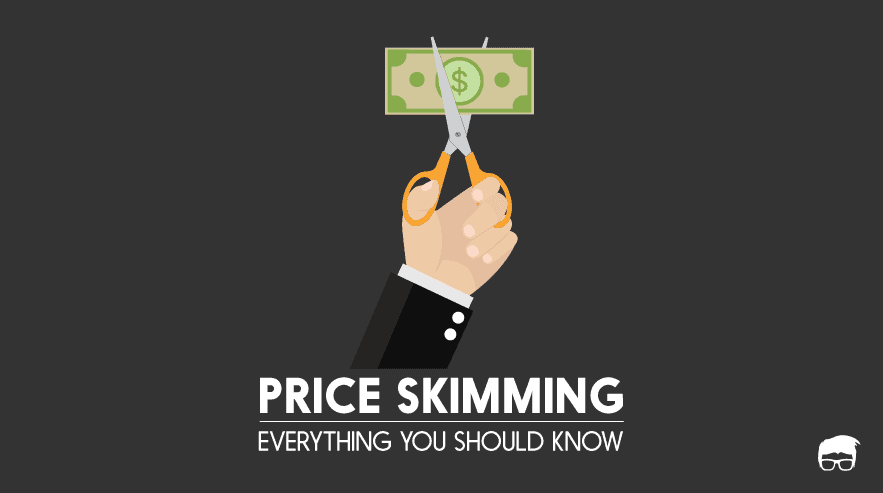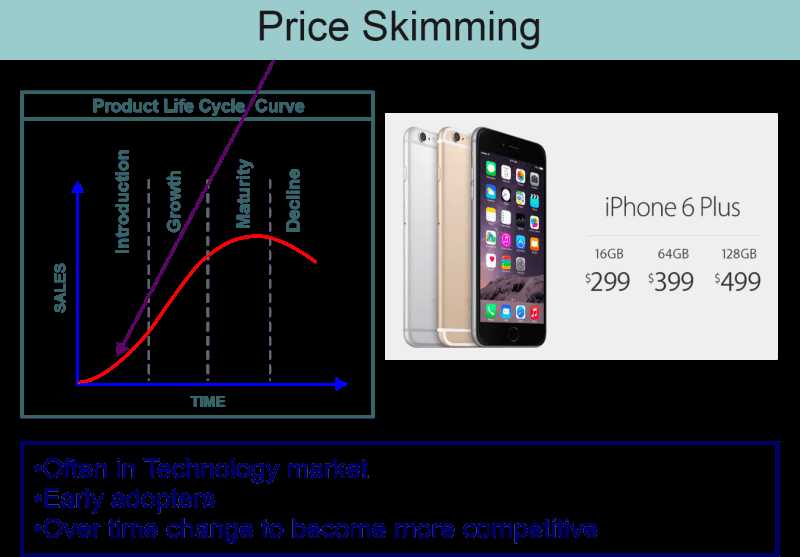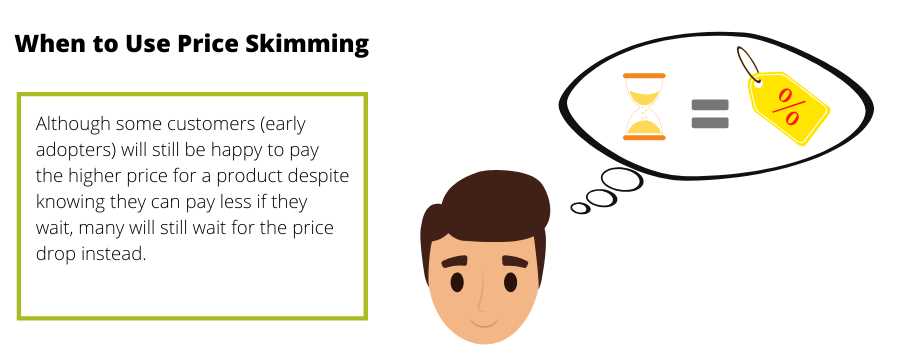What is Price Skimming?
Price skimming is a pricing strategy used by businesses to maximize their profits by initially setting a high price for a new product or service and then gradually lowering it over time. This strategy is often employed when a company introduces a unique or innovative product into the market.
Definition and Explanation
Price skimming involves setting an initial high price for a product or service during its launch phase, targeting early adopters and customers who are willing to pay a premium for the new offering. This allows the company to capture the maximum amount of revenue from these customers before gradually reducing the price to attract a broader customer base.
The term “skimming” refers to the process of “skimming off” the top layer of the market, targeting customers who are willing to pay a higher price for the product due to its novelty or exclusivity. This pricing strategy is often used in industries such as technology, electronics, and luxury goods.
How Price Skimming Works
The process of price skimming typically involves the following steps:
- Product Development: The company develops a new product or service that offers unique features or benefits compared to existing offerings in the market.
- Market Research: The company conducts market research to identify the target market segment that is most likely to be interested in the new product and willing to pay a higher price for it.
- Pricing Strategy: The company sets an initial high price for the product, taking into account factors such as production costs, competitive pricing, and customer demand.
- Launch and Promotion: The company launches the product, targeting the identified market segment through targeted marketing and promotional activities.
- Revenue Generation: The company generates high revenue during the initial phase by selling the product at the high price to early adopters and customers who value the unique features or benefits.
Limitations of Price Skimming

While price skimming can be an effective strategy for maximizing profits in the short term, it has its limitations:
- Market Saturation: Eventually, the market becomes saturated, and the company may need to lower the price further to continue generating sales.
- Competition: Competitors may enter the market with similar products at lower prices, reducing the company’s pricing power.
- Customer Perception: High initial prices may create a perception of overpricing or exclusivity, which can deter some potential customers.
- Brand Image: Setting high prices initially may affect the company’s brand image if customers perceive it as being greedy or exploitative.
Despite these limitations, price skimming can still be a valuable strategy for companies introducing innovative products or services. It allows them to recoup their research and development costs quickly and establish a strong market presence.
What is Price Skimming?
Price skimming is a pricing strategy that involves setting a high initial price for a product or service and then gradually lowering it over time. This strategy is often used by companies when introducing a new product to the market or when targeting a specific segment of customers who are willing to pay a premium price.
The goal of price skimming is to maximize profits in the early stages of a product’s life cycle, when demand is typically high and competition is limited. By setting a high price, companies can capture the maximum amount of revenue from customers who are willing to pay a premium for the product. As demand starts to decrease or competition increases, the company can then lower the price to attract more price-sensitive customers.
Price skimming can be an effective strategy for companies that have a unique or innovative product, as it allows them to recoup their research and development costs quickly. It also creates a perception of exclusivity and quality, which can attract early adopters and brand-conscious customers.
However, price skimming also has its limitations. One of the main drawbacks is that it can alienate price-sensitive customers who are unwilling or unable to pay the high initial price. This can lead to a slower adoption rate and limited market penetration. Additionally, competitors may enter the market with similar products at lower prices, eroding the company’s market share.
How Price Skimming Works
Price skimming is a pricing strategy that involves setting a high initial price for a product or service and then gradually lowering it over time. This strategy is often used by companies when introducing a new product to the market.
The goal of price skimming is to maximize profits by targeting customers who are willing to pay a premium for the product or service. By setting a high price initially, companies can capture the early adopters and those who value the product’s unique features or benefits.
Here is a step-by-step process of how price skimming works:
Step 1: Market Research
Step 2: Set an Initial High Price
Once the market research is complete, the company can set an initial high price for the product or service. This price should reflect the product’s unique value proposition and the target market’s willingness to pay.
Step 3: Target Early Adopters
The company focuses on targeting early adopters who are willing to pay a premium for the product. These customers are typically more interested in being the first to own the latest technology or enjoy the benefits of a new product.
Step 4: Lower the Price Gradually
Step 5: Monitor Competition
Throughout the price skimming process, it is essential for the company to monitor the competition. If competitors start offering similar products at lower prices, the company may need to adjust its pricing strategy to remain competitive.
While price skimming can be an effective strategy for maximizing profits, it also has its limitations. Some of the drawbacks include limited market penetration, potential customer backlash, and the risk of competitors entering the market with lower-priced alternatives.
Despite these limitations, price skimming can be a valuable tool for companies looking to capitalize on the early adopter market and generate substantial profits in the initial stages of a product’s lifecycle.
Step-by-Step Process of Price Skimming
Price skimming is a pricing strategy that involves initially setting a high price for a new product or service and then gradually lowering it over time. This strategy is often used by companies to maximize profits and take advantage of the early adopters in the market. Here is a step-by-step process of how price skimming works:
Step 1: Product Development
The first step in price skimming is developing a new product or service that offers unique features or benefits to customers. This could be a technological innovation, a premium quality offering, or any other aspect that sets it apart from existing products in the market.
Step 2: Market Research
Before implementing price skimming, it is essential to conduct thorough market research to understand the target audience, their willingness to pay, and the competitive landscape. This research helps in determining the optimal initial price for the product.
Step 3: Setting the Initial Price
Based on the market research, the company sets an initial high price for the product. This price is typically higher than the prices of similar products already available in the market. The high price is justified by the unique features and benefits offered by the product.
Step 4: Targeting Early Adopters
The initial high price is aimed at attracting early adopters, who are willing to pay a premium for the latest and most innovative products. These early adopters are often tech-savvy individuals or businesses that want to be the first to experience the new product.
Step 5: Lowering the Price
Step 6: Maximizing Profits
Step 7: Long-Term Pricing Strategy
Price skimming is often used as a short-term strategy to recover the costs of product development and generate high initial profits. Once the market becomes more saturated and competition increases, the company may transition to a different pricing strategy to maintain its market share.
Limitations of Price Skimming
While price skimming can be an effective pricing strategy for certain products or services, it is important to recognize its limitations and potential drawbacks. Here are some of the key limitations of price skimming:
1. Limited Market Segment

Price skimming is most suitable for products or services that target a niche market segment with a high willingness to pay. This strategy may not be effective for products or services that have a broader target market or appeal to price-sensitive consumers.
2. Potential for Competitive Entry
When a company sets a high initial price for a product or service, it creates an opportunity for competitors to enter the market with lower-priced alternatives. This can lead to increased competition and potential loss of market share for the company implementing price skimming.
3. Perceived Value and Brand Image
Price skimming relies on the perception of high value and exclusivity associated with the product or service. If customers do not perceive the product or service as being worth the high price, it can negatively impact the brand image and reputation of the company.
4. Price Sensitivity

Price skimming may not be suitable for markets where customers are highly price-sensitive. If customers are unwilling to pay the high initial price, the company may struggle to generate sufficient sales and achieve profitability.
5. Limited Long-Term Profitability
While price skimming can generate high initial profits, it may not be a sustainable pricing strategy in the long run. As competitors enter the market and prices start to decline, the company may face challenges in maintaining its profitability.
Challenges and Drawbacks of Price Skimming
Price skimming is a pricing strategy that involves setting a high initial price for a product or service and then gradually lowering it over time. While this strategy can be effective in certain situations, it also comes with several challenges and drawbacks that businesses need to consider.
1. Limited Market Reach: Price skimming is most effective when targeting a niche market with a high willingness to pay. However, this approach may limit the potential customer base, as some consumers may be deterred by the high initial price.
2. Competitive Pressure: As competitors enter the market or offer similar products at lower prices, the effectiveness of price skimming diminishes. This can lead to decreased market share and lower profitability for businesses using this strategy.
3. Negative Perception: Consumers may perceive price skimming as unfair or exploitative, especially if they believe the high initial price does not reflect the product’s value. This can damage the brand’s reputation and result in a loss of trust among customers.
5. Cannibalization: If a company introduces multiple products or versions with different price points, price skimming can lead to cannibalization, where customers opt for lower-priced alternatives instead of the premium offering. This can negatively impact overall sales and revenue.
6. Difficulty in Price Adjustments: Once a product is launched with a high price, it can be challenging to make significant price adjustments without negatively impacting customer perception and brand image. This can limit the company’s flexibility in responding to market changes or competitive pressures.
7. Market Saturation: Price skimming may not be effective in markets that are already saturated with similar products or where there is intense competition. In such cases, customers may have multiple alternatives to choose from, making it difficult for a business to justify a high initial price.

Emily Bibb simplifies finance through bestselling books and articles, bridging complex concepts for everyday understanding. Engaging audiences via social media, she shares insights for financial success. Active in seminars and philanthropy, Bibb aims to create a more financially informed society, driven by her passion for empowering others.
